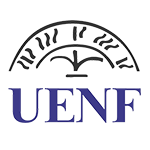Use of Data Mining Techniques in Extracting Navigation Sequences from Students in a Massive Open Online Course (MOOC)
DOI:
https://doi.org/10.18264/eadf.v10i2.1070Abstract
Students have different goals, preferences and interaction actions, and in MOOCs, the navigational behavior can be useful for making discoveries related to learning. In this context, this paper reports a research carried out with the purpose of detecting the navigation sequences of 906 students enrolled in a MOOC with content related to the discipline of Chemistry, and identify the most accessed educational materials. We employ educational data mining techniques, using the Apriori algorithm. The results showed 18 frequent sequences, and indicated that the contents of the first module of the course received more access.
Keywords: MOOC. Data mining. Sequential patterns.
Downloads
References
AGRAWAL, R.; IMIELINSKI, T.; SWAMI, A. Mining Association Rules between Sets of Items in Large Databases. In: Proceedings of the ACM SIGMOD Conference on Management of data. Anais SIGMOD '93. Washington, EUA, p. 207-216, 1993.
AMARAL, F. (2016). Aprenda mineração de dados: teoria e prática. Rio de Janeiro: Alta Books.
ANDRADE, M. V. M.; SILVEIRA, I. F. Panorama da Aplicação de Massive Open Online Course (MOOC) no Ensino Superior: Desafios e Possibilidades. EaD em Foco, v. 6, n. 3, 27 dez. 2016.
BODON, F. A Trie-based APRIORI Implementation for Mining Frequent Item Sequences. In: The Eleventh ACM SIGKDD International Conference on Knowledge Discovery and Data Mining. Anais OSDM '05. Chicago, IL, USA, p. 56 – 65, 2005.
BOROUJENI, M. S.; DILLENBOURG, P. Discovery and Temporal Analysis of Latent Study Patterns in MOOC Interaction Sequences. In: 8th International Conference on Learning Analytics and Knowledge (LAK"™18). Anais LAK '18. Sydney, Australia, 2018, p. 206-215.
BOSC., G.; TAN, P. et al. A Pattern Mining Approach to Study Strategy Balance in RTS Games. IEEE Transactions on Computational Intelligence and AI in Game, v. 9, n. 2, Jun. p. 123-132, 2017.
CASTRO, M. S. O. et al. Seleção de Caminho de Aprendizagem para Grupo de Usuários: uma Abordagem baseada em Perfil. In: XXVIII Simpósio Brasileiro de Informática na Educação (SBIE 2017). Anais ["¦]. Recife, PE, 2017, p. 1167-1176.
CHEN, Q. et al. (2018). ViSeq: Visual Analytics of Learning Sequence in Massive Open Online Courses. IEEE Transactions on Visualization and Computer Graphics, v. 26, n. 3, p. 1622-1636, March. 2020.
DEEVA G. et al. Dropout Prediction in MOOCs: A Comparison Between Process and Sequence Mining. In: TENIENTE, E.; WEIDLICH, M. (EDS). Business Process Management Workshops. BPM 2017. Lecture Notes in Business Information Processing, v. 308. Cham: Springer, 2018. p. 243–255.
FREDERIKS, G. et al. Learning by creating a MOOC. In: Learning With MOOCS (LWMOOCS), 2018, Madrid, Spain. Anais ["¦]. Madrid, 2018. p. 127-130.
GREGORI, E. B.; ZHANG, J.; GALVAN-FERNANDEZ, C.; FERNANDEZ-NAVARRO, F. A. Learner support in moocs: Identifying variables linked to completion. Computers & Education, v. 122, p. 153–168, Jul. 2018.
HAHSLER, M.; CHELLUBOINA, S. Visualizing association rules: Introduction to the R-extension package arulesViz. R project module. 2011. Disponível em: https://cran.r-project.org/web/packages/arulesViz/vignettes/arulesViz.pdf.
KOTIYAL, B. et al.. User behavior analysis in web log through comparative study of Eclat and Apriori. In 7th International Conference on Intelligent Systems and Control (ISCO). Anais [...]. Coimbatore, Tamil Nadu, India, 2013, p. 421-426.
MALDONADO-MAHAUAD, J. et al. Predicting Learners"™ Success in a Self-paced MOOC Through Sequence Patterns of Self-regulated Learning. In: Pammer-Schindler, V.; Pérez-Sanagustín, M.; Drachsler, H.; Elferink, R.; Scheffel, M. (eds). Lifelong Technology-Enhanced Learning. EC-TEL 2018. Lecture Notes in Computer Science, v. 11082. Cham: Springer, 2018. p. 355–369.
MíRQUEZ-VERA, C. et al. Predicting student failure at school using genetic programming and different data mining approaches with high dimensional and imbalanced data. Applied Intelligence, v. 38, n. 3, p. 315-330. Abr. 2013.
RIZVI, S.; RIENTIES, B.; ROGATEN, J. Temporal Dynamics of MOOC Learning Trajectories. In: Proceedings of the First International Conference on Data Science, E-learning and Information Systems. Anais [...]. Madrid, Spain, Article No. 39. 2018, p. 1-6.
TAIR, M. M. A.; EL-HALEES, A. M. Mining Educational Data to Improve Students"™ Performance: A Case Study. International Journal of Information and Communication Technology Research, v. 2, n. 2, p. 140-146, 2012.
Downloads
Published
How to Cite
Issue
Section
License
All articles published in Revista EaD em Foco receive the license
Creative Commons - Atribuição 4.0 Internacional (CC BY 4.0).
All subsequent publications, complete or partial, must be made with the acknowledgment, in citations, of the Revista EaD em Foco as the original editor of the article.













